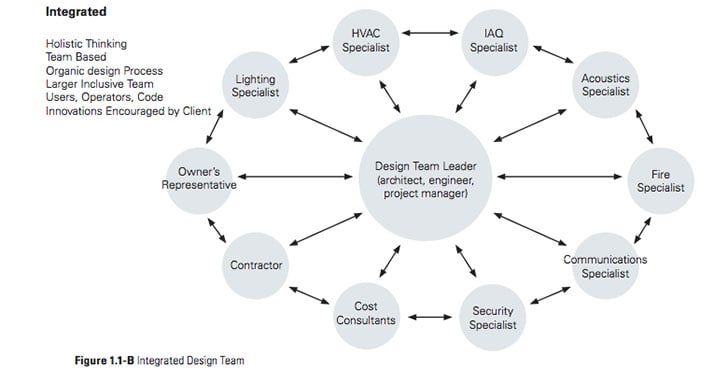Why is a healthy building important?
A healthy building is one that ensures that the indoor environment and air quality are maintained to create a healthy productive environment for the buildings’ occupants. The business case for maintaining a healthy building is increasingly becoming popular. This is because many reports have been published to support the fact that health, wellbeing and productivity of the people occupying the building has a direct correlation to the indoor air quality (IAQ) of the building. These reports made it very clear that creating a sustainable and healthy work environment has a direct impact on the financial performance of an organization. Indoor environments can cause or amplify many health problems such as asthma, cancer, cardiovascular diseases as well as sick building syndrome (SBS). The sick building syndrome is specifically related to the complaints by building occupants.
There are several factors that affect the indoor air quality of a building. Some of them are: Temperature, humidity, presence of carbon monoxide or carbon dioxide, volatile organic compounds such as paints, adhesives and other odors and microbial organisms like fungi or mold. Most of these affect the respiratory functions and can cause irritation, headache, or fatigue. Symptoms include itching, redness, and irritation of eyes, nose and throat. Respiratory symptoms include nasal congestion, itching, coughing, and runny nose. Throat symptoms include feelings of dryness and irritation. Hence IAQ not only affects occupants’ health, comfort, and productivity but also has significant economic impact on building owners and occupants.
Essential checklist for maintaining a healthy building:
The following is an essential checklist of items to remember while maintaining a healthy building. They are as follows:
1. Plan and maintain an indoor air quality policy:
IAQ policy should follow the guidelines as dictated by ASHRAE. Acceptable indoor air quality is published and maintained by American Society of Heating, Refrigerating and Air-Conditioning Engineers (ASHRAE). According to ANSI/ASHRAE Standards 62.1 and 62.2 are the recognized standards for ventilation system design and acceptable IAQ. The standards define minimum ventilation rates, environmental tobacco smoke limits, operations and maintenance requirements etc. There are other standards such as harmful concentrations as determined by the Department of Environment, Health and Safety (EHS), which ensure that a substantial majority of people exposed do not express dissatisfaction. An indoor air quality policy should be followed both during construction of a building as well as when the building is completed and is occupied. Activities such as retrofitting of old buildings should also focus on indoor air quality. This is because design and construction decisions affect the quality of the indoor environment. IAQ is not just the responsibility of building owners, occupants or facility managers. Architects, design engineers, construction contractors, Commissioning authorities (CxAs), building operators and product manufacturers are other people in the ecosystem that can help with maintaining a high quality of indoor air.
Buildings should document their indoor air quality policy in order to measure their environmental and community impacts.
2. Design a good IAQ during the construction of the building:
Today everyone in the construction industry is trying to be “green” or use an “integrated” approach to design. It is important to have an early conversation about comfort, energy efficiency and indoor air quality. Contrary to popular belief, maintenance of IAQ is not an expensive process if steps are taken during the initial design phases of the construction of the building. The building structure and envelope is a major contributor towards maintaining a good indoor environment along with thermal comfort. One of the most effective ways of incorporating good IAQ is to have a detailed discussion involving all the various project teams. According to a report by ASHARE, examples of integrated project team members are HVAC specialists, Lighting specialists, Fire specialists, security specialists etc. This is important because most IAQ issues occur due to isolation of the various project teams.
Below is an image of an integrated report presented in that report.

Source: Indoor Air quality guide: best practices for design, construction and commissioning.
3. Maintain IAQ in an occupied building:
Preventive measures:
- Commissioning: Although a good design helps in initiating indoor air quality, what really helps with its upkeep is commissioning. Commissioning is a process through which buildings ensure quality control of its design, construction, materials used and systems installed. An ideal commissioning process should start in the design phase to maximize its effectiveness. Some of the focus areas for Commissioning of indoor air quality include checking the area to be free of condensation and mold problems, be properly ventilated, and provide good-quality ventilation air.
- HVAC systems and ventilation rates: HVAC systems are at the heart of maintaining indoor air quality. They are responsible for the pressure control in the building, they help with the humidity control, and they are primarily used for thermal control and most importantly maintaining the ventilation rates. A HVAC system that is not operating well can lead to insufficient ventilation, thereby affecting and leading to poor indoor air quality. In addition to the measurable IAQ factors such as temperature, humidity, CO2, and air speed, the HVAC systems should also consider human factors such as occupancy controls. It has been suggested in a number of studies that ventilated buildings with enhanced occupant control of the indoor environment have lower reported rates of sick building syndrome symptoms.
- Scheduled inspections: Scheduled inspections of indoor air quality are the basis for maintaining a healthy building. These inspections may involve manual or automated processes. Sometimes internal team members do them and other times an IAQ expert is hired to conduct these periodic inspections. Some of the checks conducted include HVAC inspections that include ducts, vents, air filters, fans, fins, and coils, drain pans and linings. Any presence of dampness, detectable odor, staining, dust or mold is duly noted. Sometimes, sample of pollutants is collected for further verification. Visual inspection is extensively conducted to check for occupants’ discomfort levels, any emissions or odors. This process results in an extensive report highlighting issues with priorities assigned to issue resolution.
- Continuous Monitoring: Traditional methods of maintaining indoor air quality were often scheduled inspection, commissioning or maintenance activities that occurred periodically. With technological advancements such as the Internet of Things (IoT), sensors can now be used to continuously monitor and receive data such as temperature, carbon dioxide or carbon monoxide concentrations and total volatile organic compounds. These are the factors that mostly contribute towards poor indoor air quality. The data can be collected hourly, daily or weekly periods of time. This allows you to capture data in a continuous manner and compare any unusual activities or spikes whether the building is occupied or not. This helps in capturing any odors or unwanted particles long before a scheduled maintenance program, thereby making it the most efficient of most methods used.
- Operations and Maintenance: The operational maintenance of all systems and equipment in a building is essential to maintain good IAQ. This involves periodic inspection, cleaning, and repair of mechanical systems, HVAC Systems Inspection, Cleaning. Updating all calibration records, adjustments and control settings. Any components needing repair, adjustment, or replacement have to be addressed in an urgent manner depending on its impact to IAQ. Locations changes due occupancy, equipment, or building use have to be documented. A list of people responsible for addressing complaints has to be published. A registry of complaints has to be maintained and updated on a need by basis.
Remedial Measures
Despite all the aforementioned measures, there might occur an instance when immediate action has to be taken due to an issue. This includes either temporary measures like locating the source of odors and introducing air. Sometimes it might involve extensive measures like renovation. Whatever is the remedial measure, the first step of this process involves identifying the source of the problem and understanding the sense of urgency of the issue. Addressing the issue according would ensure a healthy building relationship with the occupants.
Conclusion
In conclusion, today everyone is aware that a healthy building is essential for a healthy and productive workforce. However maintaining a high indoor air quality is not as easy since a range of factors impacts it. A proven checklist would help you with maintaining the high quality of indoor air that most tenants demand these days. This checklist involves proactive measures such as having a good indoor air quality policy, ensuring that importance is given to IAQ during the design and construction of the building as well as implementing extensive preventive measures.




